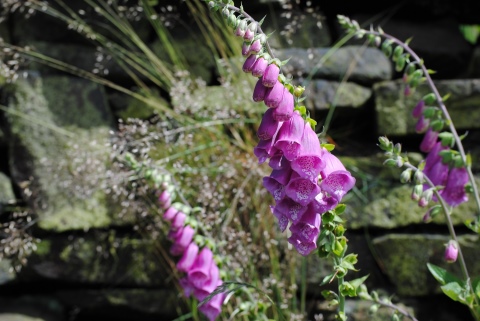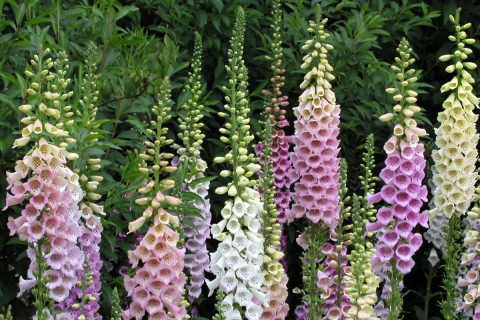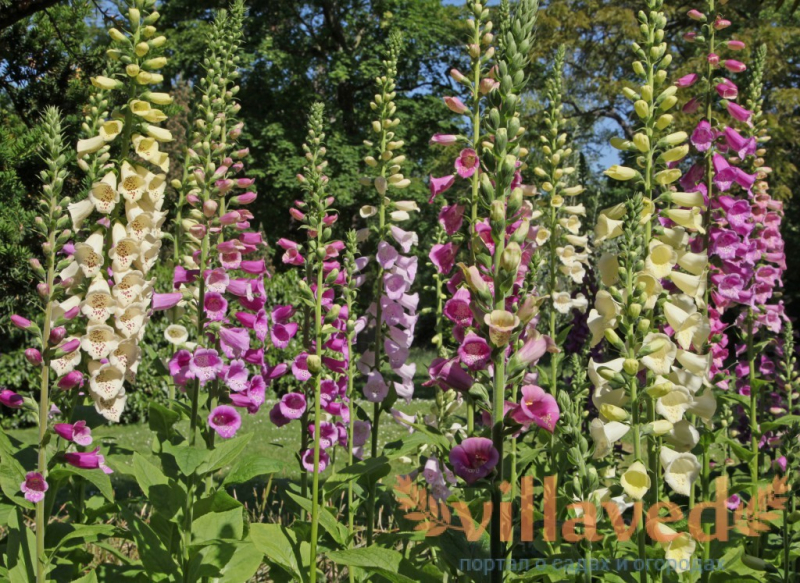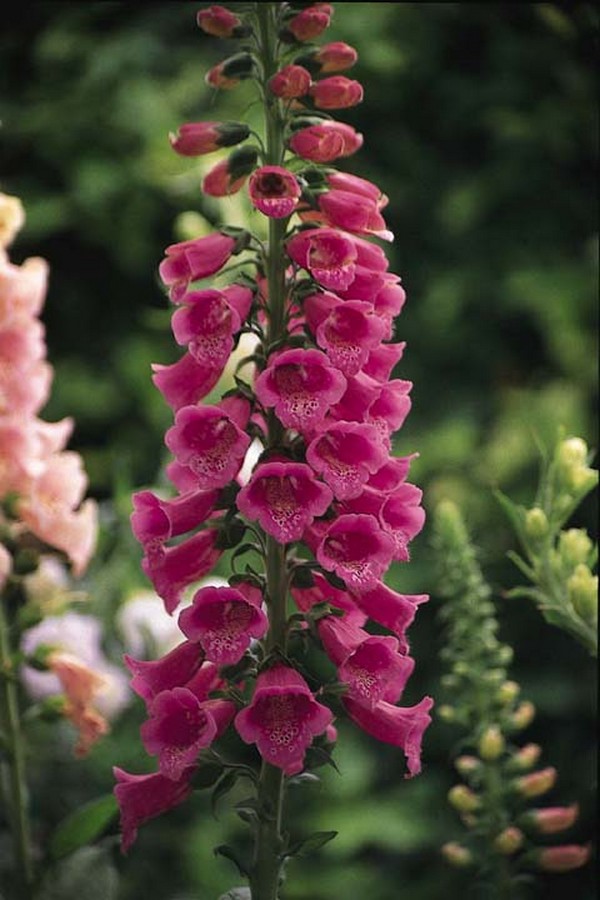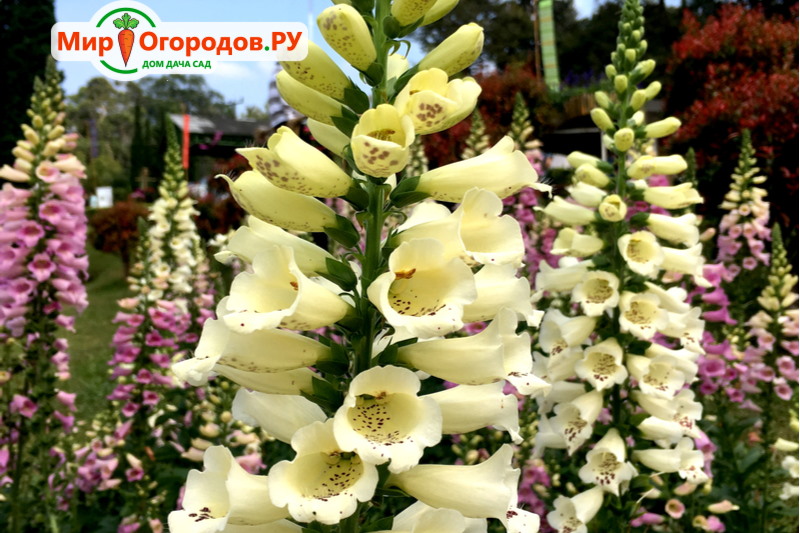Care
The digitalis care is pretty simple. But there are also peculiarities.
Watering, feeding
Watering foxgloves is only necessary if the summer is too hot. It is enough to fertilize the flower a couple of times. To do this, you need any complex mineral fertilizers for flowers, and better liquid ones. You can simply mix the fertilizer with water for irrigation.
Bush care and wintering
It is very important to loosen the soil. But since the roots of the foxglove are located horizontally, then it is not necessary to loosen deeply
You also need to cut off dried flowers and bushes regularly.
Parasites, diseases
Most often, a pest such as aphids settles on a foxglove. To combat it, you can use the following tools:
- Antitlin;
- Biotlin;
- Spark.
As for diseases, most often digitalis are affected by typical flower ailments:
- Viral mosaic;
- Spotting;
- Powdery mildew;
- Rot.
Types and varieties of foxgloves
There are five varieties of foxgloves, each of which has certain characteristics.
Purple
Purple foxglove is a perennial (or biennial) flower that grows up to one and a half meters in height. This biennial has erect stems with small basal leaves. According to the GF, the purple foxglove has ovoid leaves about ten centimeters long. The petals are white, with a slight pinkish and purple tinge.

Purple digitalis petals
Common varieties of this species include:
- Alba. A plant with bright white flowers.
- Red dwarf. Variety with deep red petals.
- Mirabella. Purple foxglove, the petals of which are painted pink with a cream shade.
Large-flowered
Large-flowered digitalis is a tall flower with stems reaching 120 cm in height. Flowering begins in the first half of summer and lasts 2-3 months. The flowers are yellowish.
Additional Information! Small specks of brown can be seen on the petals.
Among the varieties of this large-flowered perennial are:
- Camelot Rose. A hybrid variety that grows up to 150 cm in height. It blooms for two seasons.
- Sugar Plume. Tall flower, ideal for growing in a flower bed. Blooms from early June to late August.
- Carillon. Large-flowered variety with yellow petals. Its flowering begins in early summer and lasts until early September.
Rusty
A medium-sized species, the height of which rarely exceeds 60-70 cm. The rusty foxglove has dense wavy inflorescences, consisting of small bells. The petals are yellowish. Some of them have pinkish designs.

Rusty foxglove during flowering
The varieties of this type include:
- Giant. Frost tolerant plant ideal for outdoor cultivation. The Giant's petals are yellow with a barely noticeable orange tint.
- Gelber Herold. Medium-sized variety with oblong and pubescent leaves. Blooms from late June to early September.
- Carousel. A flower with yellowish petals covered with red spots.
Woolly
Woolly digitalis is a medium-sized perennial that does not grow taller than eighty centimeters. This species differs from other varieties in its late flowering.
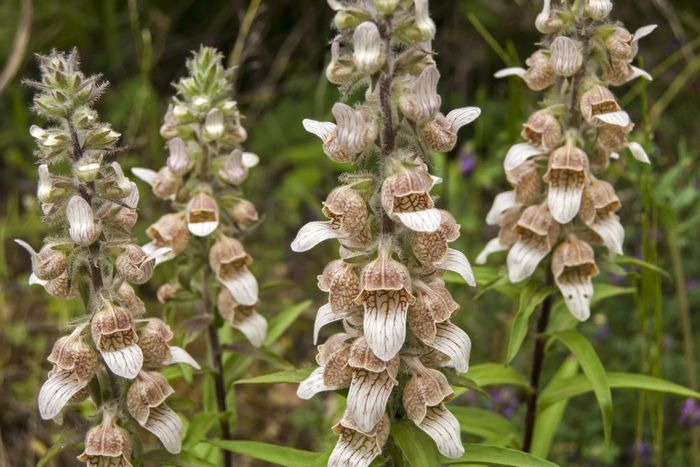
Blooming foxglove
Important! The flowering of this plant does not begin at the beginning, but in the middle of summer. Among the main varieties of woolly varieties, the following are distinguished:
Among the main varieties of woolly varieties, the following are distinguished:
- Dalmatian Purple. Tall flower that grows up to 115 cm in height. The leaves of the variety are oblong, colored green.Blooms in early July with purple flowers.
- Pink champagne. A plant with multi-colored flowers. Ideal for planting in shaded areas.
Yellow
This perennial flower is similar to the rusty foxglove species. Its petals are also most often colored yellow. The plant grows up to one and a half centimeters in height. It is necessary to grow this type of culture on fertile soils, which contain many nutrient components.
Reproduction methods
Growing from seeds

Most often, kentrantus is propagated by seed. Sowing seeds in open ground is carried out either in May or in September. When sowing kentranthus in the fall, the site should be covered with a layer of loose leaf plates.
Sowing seeds for seedlings is carried out in March. They are sown in small pots, while the seeds are not sprinkled on top. In order for the seedlings to be friendly, the crops are harvested in a well-lit place, while the temperature should be room temperature. After the plants reach about 50 mm in length, they need to be thinned out, while in a pot only the most powerful seedling should remain. The grown seedlings are planted in the garden in the second half of May, while the distance between the bushes should be about 0.4–0.45 m.
Cuttings
For reproduction of kentrantus, the grafting method is also used. Cuttings are harvested from July to August. For this, powerful branches are cut, which are planted for rooting in a pot filled with nutritious soil. It is necessary to deepen the segments into the soil mixture by about 10 centimeters. When they give roots, they are planted in a permanent place in the garden.
Dividing the bush
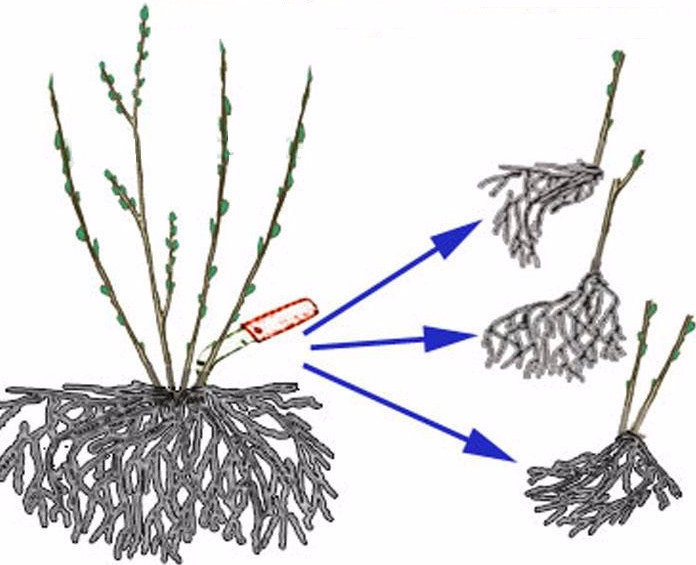
For this, overgrown bushes are transplanted in July-August. After the plant is removed from the soil, it is divided into several parts. Delenki are planted immediately to a permanent place.
Kentrantus grows relatively quickly and loses its decorative properties. In this regard, experienced gardeners recommend replacing old bushes with new ones on average once every 3 or 4 years. If this is not done, then the flowering of plants will become more and more scarce, and some branches will begin to bare and lignify at the base. But you should not be afraid, since centrantus reproduces quite easily in any of the ways described above.
Care
Foxglove flowers must be properly cared for so that they grow well and do not dry out. Optimal conditions for her: moderate watering, shallow loosening.
Watering
Perennial rudbeckia - how it blooms, popular varieties
Flowers planted in the garden should be watered 2-3 times a week, as without watering they will quickly dry out. To moisten the soil, you need to use heated water.
Important! You cannot use cold water, as it will harm the root system.
Mulching
You may need to use mulch to keep moisture in the soil for longer. The planted flowers can be mulched with sawdust or dried grass. This should be done annually at the end of spring.

Dry grass is the best soil mulch
Loosening
After moistening the soil, a dense crust remains on its surface. To get rid of it, you need to loosen the soil once a week. To do this, you need to loosen the ground with a hoe near the planted flower. If there is no hoe, then a rake can be used instead.
Top dressing
Fertilization begins in mid-spring. During this period, a fertilizing mixture of ammonium nitrate is introduced into the soil. To prepare it, you need to add 15 g of the substance to 10 liters of water. Next time you need to feed the flowers in the summer. Chemical and mineral fertilizers are added to the soil to stimulate flowering.
Transfer
When the plant grows too large, it needs to be replanted to a new location. It is necessary to do a transplant at the beginning of summer. To do this, you need to carefully dig in a bush and remove it along with an earthen lump. The new place where the foxglove will land must be prepared in advance.For this, the soil is moistened and fed.



